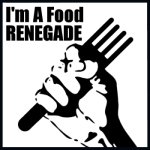I went to San Francisco in search of the beats — not those of the musical variety, but those that consequently threw the literary universe off its axis.
They were the iconic founders of the beat generation: Jack Kerouac, Allen Ginsburg, Neal Cassady and Lawrence Ferlinghetti. They were the ones who shaped the literary scene in San Francisco’s North Beach in the mid-1950s.
The beat-movement writing was unlike anything ever done.
It was non-conforming, unconstrained, highly and openly emotional, depicting gritty worldly experiences, often including abundant drug use, deviant sexuality and other forms of aberrant behaviours.
A seeming contradiction, the beat generation was also spiritual and heavily influenced by Eastern religions, such as Buddhism.
It was Kerouac — an American novelist and poet born to French-Canadian parents — who unwittingly coined the term “beat generation” in 1948, when he said, “We are nothing but a beat generation,” describing the way the young people at that time felt — weary and beat down.
But it was the late San Francisco Chronicle columnist Herb Caen who conceived the term “beatnik” to describe the bunch.
It was the Pulitzer-Prize winner who also dubbed his city as Baghdad by the Bay.
In the early 1950s, Kerouac lived on Russell Street with Cassady — said to be the real genius behind the beat movement, despite never publishing a book — for some time while revising his seminal novel On the Road and writing parts of Visions of Cody.
While taking pictures of the place, I wondered how many times the home’s owners watched as other wannabe novelists stood outside, dreaming of days gone by.
On the Road, spontaneous prose about his cross-country adventures with Cassady,
was published in 1957 and established Kerouac’s place within the beats.
During this post-war time, the city was an enclave for writers, poets and thinkers — and North Beach was the epicentre.
Attracted by low rent and myriad eateries, North Beach was the cultural heartbeat of the city.
By day, the bohemians drank cheap wine on the grass of Washington Square Park or sipped coffee at Cafe Treiste, the West Coast’s first espresso house.
By night, they frequented Vesuvio Cafe — where you can order a “Jack Kerouac” made from rum, tequila, orange, cranberry and lime juice — and jazz central The hungry i (which is now a topless strip bar).
But, no other spot was more a meeting place than City Lights Bookstore, opened in 1953 and still owned by Ferlinghetti, a poet, painter and liberal activist best known for his Coney Island of the Mind.
In October the previous year, Ginsberg — a poet opposed to militarism, materialism and sexual repression — wrote Howl.
He first read his poem at the famous Six Gallery reading on Filmore Street in the Pacific Heights district.
It was, perhaps, one of the most arresting openings ever heard:
“I saw the best minds of my generation destroyed by
madness, starving hysterical naked,
dragging themselves through the negro streets at dawn
looking for an angry fix . . .”
The very next day, Ferlinghetti sent the young poet a telegram: “I greet you at the beginning of a great literary career” and offered to publish his work.
 However, the uncensored examination for the ugly underbelly of society was too salacious and Ferlinghetti was arrested and charged with obscenity by San Francisco police for selling the novel.
However, the uncensored examination for the ugly underbelly of society was too salacious and Ferlinghetti was arrested and charged with obscenity by San Francisco police for selling the novel.The trial garnered national attention of the beat writers and heaps of support from prestigious literary and academic figures.
It was a long battle for freedom of expression that included the government burning more than 500 copies of the poem and was eventually won in 1957, when Ferlinghetti was acquitted, setting a precedent for other First Amendment cases.
Though missing the iconic green awning today, the bookstore is still selling and publishing some of the best revolutionary and evolutionary novels.
Take a walk by the store on Columbus Avenue — right next to Kerouac Alley — and you’re likely to see a novelist giving a reading in a room packed with books and other writers.
The beat movement was conceived in New York, but came to life in San Francisco, attracting other famous writers, such as William S. Burroughs, Gregory Corso, Peter Orlovsky — Ginsberg’s 40-year partner — Herbert Huncke and Clellon Holmes.
And, although the height of the movement was 60 years ago, if you listen closely, the beat is still audible in the streets of San Francisco.





